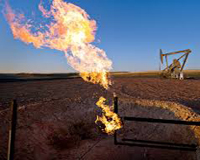China is on a long-term track to become a net exporter of petroleum products to the Middle East, a senior official of state-controlled China National Petroleum Corp said Tuesday.

"China could at some point become a net exporter of fuel products to Arab countries," CNPC Director of Research Ding Shaoheng said during a question and answer session at the Abu Dhabi International Downstream Exhibition and Conference.
China was likely to remain a major importer of Middle East crude for the foreseeable future, Ding said.
During a conference presentation on the long-term outlook for oil product supply and demand in the Chinese domestic market, Ding forecast that Chinese annual oil-product consumption would rise from 286 million mt in 2013 to 360 million mt in 2020 and 440 million mt in 2030.
Meanwhile, annual fuel production capacity at Chinese oil refineries was forecast to expand from 296 million mt in 2013 to 390 million mt in 2020 and 440 million mt in 2030.
Consequently, between 2013 and 2030, China's margin of fuel production capacity in excess of domestic requirements was expected to widen from 10 million mt to 50 million mt.
Looking at the 2013-30 outlook for specific products markets, Ding projected annual growth in Chinese gasoline demand averaging 7% from 2013 to 2020 and 3% in the following decade.
Kerosene demand would expand even further, at an average annual rate of 9% until 2020 and 6% until 2030, he predicted.
In sharp contrast, China's domestic diesel consumption was expected to grow at a subdued rate, averaging 0.4% a year until 2020, and to contract by 0.4%/year in the next decade.
In the same period, the country's demand for alternative transportation fuels, including electricity, biofuels and methanol derivatives, was expected to soar.
These product demand trends were being driven by structural economic changes, Ding said.
"The Chinese economy is experiencing a transformation from high-speed growth to maturity," he said. "The economy is restructuring, with primary industry's share decreasing, secondary industry remaining stable and tertiary industry increasing." Nonetheless, China's automobile industry was expected to maintain relatively strong growth in the next 10 years due to current and increasing popularity of passenger vehicle ownership and the expanding radius of travel.
Similarly, strong kerosene demand growth was being driven by the rapid expansion of the country's domestic aviation sector.
Diesel demand, an indicator of the strength of primary heavy industry, was expected to show, at best, anemic growth in the medium term.
In many Chinese industrial sectors in 2013, diesel demand shrank as the country's overall annual economic growth declined from double-digit territory to 7.7%.
Ding predicted a continued steady decline in Chinese economic expansion in the next 20 years, with the growth rate eventually stabilizing at around 5% a year.
The continued expansion of China's oil refining sector, if it unfolds as CNPC expects, points to increasing competition, with large refining and petrochemicals complexes either under development or planned in the Arabian Peninsula by petroleum exporters, including Saudi Arabia, the UAE, Oman, Qatar and Kuwait.
While much of the Middle East capacity expansion is aimed at supplying rapidly increasing regional growth in transportation fuel consumption, most Arab oil exporters in the Persian Gulf region are also seeking to capture more of the petroleum value chain by replacing some of their current crude exports with products exports, and Asia is the major target market.





